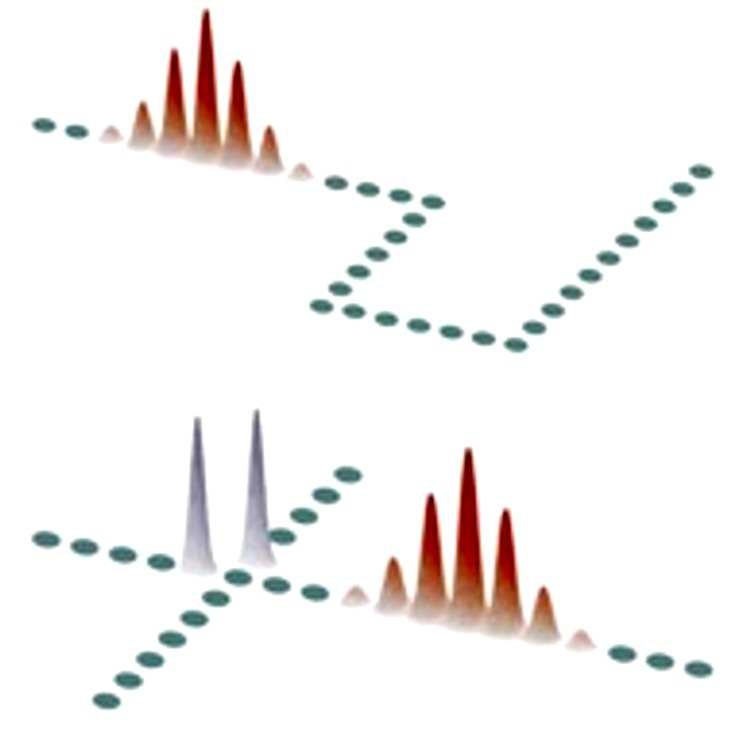-
Viewpoint on 'IONS'
Viewpoint on 'Scientific Literacy'
- Proudly sponsored by
-


Optical Lattice Solitons:
Guiding and Routing Light at Will
Optics & Photonics Focus
Volume 5 Story 5 - 26/6/2009

Optics & Photonics Focus
Volume 5 Story 5 - 26/6/2009
Possible applications of discrete solitons
Upper row: A nonlinear array network involving consecutive bends. The waveguide cross-sections are shown in green. A discrete soliton, shown in red, is set in motion in this system by appropriately tilting the beam. Computer simulations indicate that discrete soliton can successfully negotiate a sequence of bends. Lower row: An X-switching junction that uses two different discrete soliton families, signal (red) and blockers (blue). Unlike signal, which are highly mobile, blockers tend to retain their position after a collision event. After incoherent collision, the signal soliton is routed toward the lower branch, because of the presence of the two blockers at the entries of the respective pathways.
[read full story]
